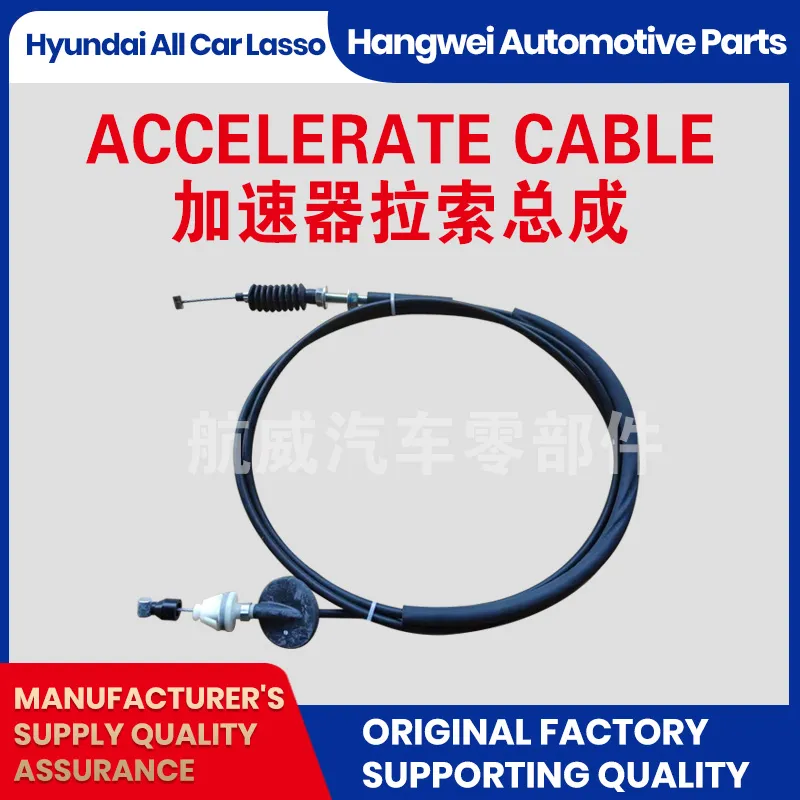Throttle Cable: Universal, Durable, Ready to Install?
A Field Insider’s Look at the Accelerator Push-Pull Cable (aka the throttle cable)
Even in the age of drive‑by‑wire, a well-built throttle cable still earns its keep. Small engines, motorcycles, ATVs, forklifts—mechanical control is immediate, intuitive, and, frankly, easier to service at the track or on the job site. I’ve seen teams swap a frayed line in minutes and be back on the dyno before the espresso cooled.

Industry trends (and a quick reality check)
Yes, passenger cars migrated to electronic throttles. However, demand for robust throttle cable assemblies is rising in powersports, marine, generators, and industrial equipment. Why? Rugged simplicity, predictable feel, and low TCO. Plus, retrofit and custom builds keep the aftermarket busy. Quiet trend: OEMs are pushing for lower friction liners and longer cycle life—often verified with salt-spray and endurance test rigs.
Product snapshot: Accelerator Push-Pull Cable
Origin: Qinghe County Minjiang Street south, Wuzhishan Road east. This accelerator cable assembly transmits pedal input to the engine or governor—cleanly and repeatably. Many customers say it “feels lighter” after break‑in, which matches our lab friction data.
| Spec | Details (≈ real‑world may vary) |
|---|---|
| Product name | Accelerator Push-Pull Cable (Bowden type throttle cable) |
| Inner wire | 7×7 SS304 or galvanized steel, Ø1.2–2.5 mm; lubricated |
| Conduit | Steel spiral + HDPE/PTFE liner; PVC/PE jacket (UV‑stable options) |
| End fittings | Zinc-plated carbon steel or SS304; ball, barrel, clevis, threaded |
| Operating temp | −40 to 120 °C continuous; short peaks to 140 °C |
| Pull load rating | ≈ 800–1,500 N depending on construction/length |
| Cycle life | ≥ 200,000 cycles at rated load in lab testing |
| Compliance | ISO 9001, IATF 16949; salt-spray per ASTM B117 / ISO 9227 |
Process flow, methods, and testing
Materials are incoming-inspected, then the wire strands are drawn and pre-lubed; conduit is spiraled and extruded with a low-friction liner. End fittings are swaged or crimped; threads are rolled (not cut) for strength. QC includes pull-out strength, stroke/effort mapping, 96–240 h salt-spray, dimensional checks, and cycle endurance to failure. We also run noise/feel checks—because a gritty throttle cable is no one’s friend.
Where it’s used (and why)
Motorcycles, ATVs/UTVs, go‑karts, lawn & garden, construction equipment, outboards, gensets. Advantages: tactile feedback, simple troubleshooting, no sensor latency, and easy field replacement. For OEMs, customization (stroke, sheath length, boot design, bracket geometry) is straightforward.
Vendor comparison
| Vendor | Certs | Customization | Lead time | Notes |
|---|---|---|---|---|
| HWEI (Qinghe County, Minjiang St. south, Wuzhishan Rd. east) | ISO 9001, IATF 16949 | High: end‑fittings, liner, boots, brackets | ≈ 3–5 weeks | Balanced cost/quality; strong automotive QA |
| Generic Importer | Varies | Low–Medium | 2–8 weeks | Lower price; verify test data carefully |
| Specialty Local Fab Shop | Shop-level QA | Very High (small batches) | Days–2 weeks | Great for prototypes; higher unit cost |
Customization and real-world wins
One motorcycle OEM switched to a PTFE‑lined throttle cable with a tighter spiral conduit; rider pull effort dropped ≈18% and warranty claims fell noticeably. Another case: a forklift fleet used a stainless inner wire and sealed boots—corrosion complaints practically vanished after two winters. Feedback I hear a lot: “Feels smoother, lasts longer.” Not scientific, but it aligns with bench data.
Certifications, standards, and data
Production under ISO 9001 and IATF 16949, salt-spray per ASTM B117/ISO 9227, and environmental validation with automotive profiles (vibration/temperature per ISO 16750‑like regimes). For Bowden controls, DIN 71986 is a useful reference. Typical lab results: pull-out strength ≥ 1,200 N (M6 barrel), friction coefficient trend stable after 1,000 cycles, endurance ≥ 200k cycles at rated load.
Citations
-
Clutch Line: Braided, Leak-Proof, OEM-Grade PerformanceNewsNov.10,2025
-
Throttle Cable: Durable, Smooth Control & Universal FitNewsNov.10,2025
-
Throttle Cable: Durable, Smooth, Universal Fit, Easy InstallNewsNov.10,2025
-
Clutch Line: Durable, Leak-Proof, OEM-Grade PerformanceNewsNov.10,2025
-
Hand Brake Cable | Custom, Universal & Trailer SolutionsNewsNov.10,2025
-
Clutch Line: High-Pressure, OEM-Fit, Corrosion-ResistantNewsNov.03,2025
